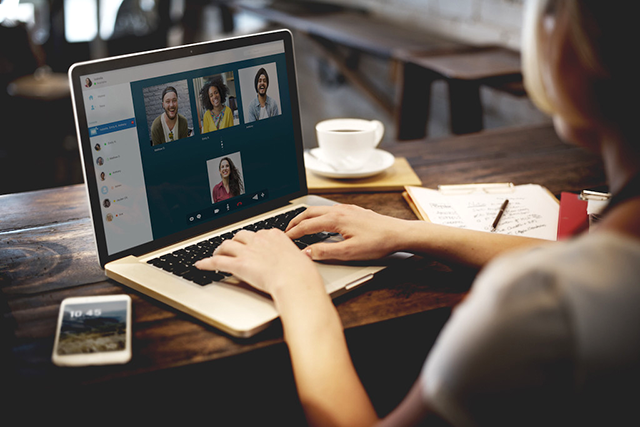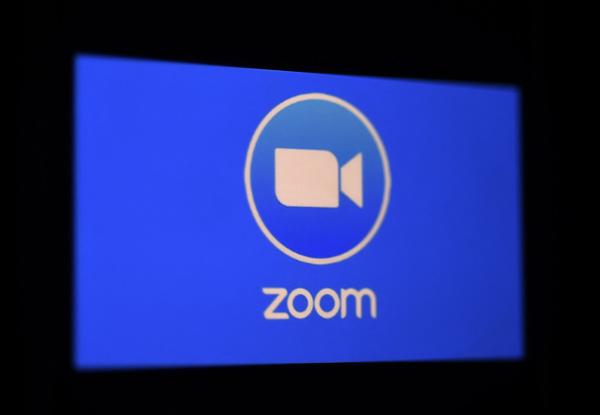You are here
Chiptalk: Software to meet online
By Jean-Claude Elias - Apr 30,2020 - Last updated at Apr 30,2020

Photo courtesy of lumenlearning.com
We are lucky to have technology providing us with the tools to make video calls and to meet online easily, with image and sound quality that were unthinkable only a few years ago. The software applications that let us do this are many. Are they all equal? What are the differences? Does it matter at all?
It certainly matters, for at least one very good reason. Despite the recent and most welcome loosening of the lockdown that was introduced by the authorities since the Covid-19 outbreak, everything indicates that some of the working and living habits we adopted since the beginning of the crisis are to be with us for a while.
The social, the business and the government systems have discovered the advantages (and the disadvantages…) of “doing it online” as much as possible and whenever it is possible, whether we are confined at home or not. Therefore, even once this crisis is over, the population will probably keep going for increased usage of software that lets us meet online.
Webex, in the business world mainly, along with Facebook Messenger and Skype have been the most popular and the most widely used till now. Over the last couple of months we have also (re)-discovered Microsoft Teams and Zoom. The first has been here since 2017, and Zoom since 2013. Let’s not forget WhatsApp video calling that lets up to three people meet. Video and voice calling over WhatsApp is a special case, however, for some countries are blocking the service sometime, and in Jordan for instance, it seems that it only works over Wi-Fi and not over 4G.
Using all these services extensively, on an almost daily basis, leads you to comparing them, to analysing their features and functionality. Fitness for use depends on what you want to do. Understandably, a one-on-one video call to a friend is different from a business meeting that would include 20 people or more. You also need to know if you are just going to “chat” or to exchange documents and information, to make some of the documents or the photos available for all to see and discuss.
Zoom, for instance, is very practical and friendly when it comes to viewing the same document by all parties. It lets you switch from webcam view to screen contents view. Skype lets you also do that, but Zoom has an important plus, it can let any participating party take control of the screen that is showing the shared document, scroll, edit, write on it, etc.
Interestingly virtually all these applications let you have a free subscription that you can put to good use for testing them and then decide which the best is for you. Zoom is free for unlimited use for two participants, and for meetings of up to 40 minutes for 100 participants. For more than this subscriptions start at $15 a month. Fair enough.
Facebook Messenger meeting is still popular, mainly because it is linked to your main Facebook account. Many find it to be the easiest to use, though it comes with limited features. Greatest ease of use and limited functionality often go hand in hand.
Last but not least is the kind of video meeting for musicians to play together remotely, for students to learn music online or for teachers to teach the art. For this kind of virtual meetings none of the above mentioned software would be good enough. Indeed, to share music this way the connection must be very fast, with almost no time lag at all (called latency in technical jargon), and image and especially sound, must be excellent.
To achieve the lowest possible latency the connection of the computer to the Internet must be done via cable (i.e. not wireless or Wi-Fi) and of course through fibre optic. Smartphones and tablets are excluded here and only a powerful computer with a professional sound card would do the job. These systems are used in all the online global concerts we have recently seen on YouTube and other channels, like for example the “One World Together at Home — Global Citizen” concert, where many famous musicians performed all together, live, online, and in perfect sync, but actually were each in their own house.
Such systems include Nucorder, JamKazam and Jammr, to name but a few. Only pro musicians used to know them, but the lockdown has now brought more people to discover and to operate them, though they remain naturally less frequently used than Skype, Zoom, Messenger and the like.
Related Articles
By Ruba Al Far; PharmacistVideo chatting for learning, work and social connections has become a new norm for hundreds of millions of pe
SAN FRANCISCO — Facebook on Friday unveiled a new video chat service with virtual "rooms" where people can pop in to visit friends, aiming a
SAN FRANCISCO — Zoom, the videoconferencing firm, has agreed to settle a class-action US privacy lawsuit for $85 million, it said on Sunday.














